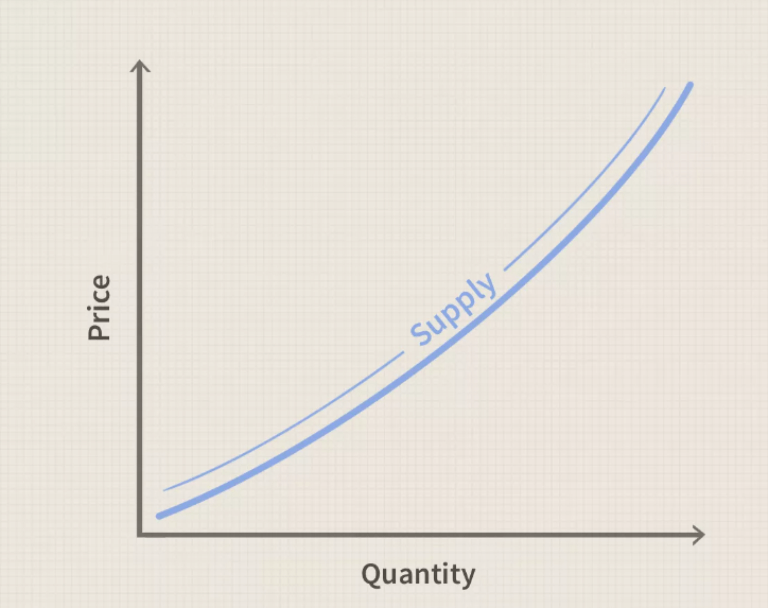Supply Analysis – A Detailed Guide
What is supply?
Supply of a commodity refers to the various quantities of the commodity that a seller is willing and able to sell at a different price in a given market, at a particular point, by remaining other things constant.
An aspect of supply management which needs attention is that supply is related to scarcity. It is only the scarce goods that have a certain supply price, rather the goods which are freely available have no supply price.

The determinants of supply
The amount of a commodity depends upon a number of factors. The determinants can be stated in the terms of a supply function.
Let us discuss the determinants in detail
Price of the goods
Since higher money income is necessary to induce producers to produce more, the amount supplied, therefore, increases when producers get a higher price for their product.
Price of other goods
Changes in the prices of other goods in the market also influence the supply of a commodity.
For example, if the price of good Y rises, the producer of good X will start to consider switching his production to good Y as it has become relatively more attractive to produce Y now than before.
Prices of the factor of production
We know that different commodities use factors in different proportions.
An increase in the price of a factor, say labour, may lead to a larger increase in the costs of making those commodities that use relatively more labour, but only a smaller rise in the cost of producing those commodities that use a small amount of labour.
This will lead to changes in the relative profitability of different commodities and this their amounts supplied.
Objective of producer
There can be a lot of objectives of a firm, such as profit maximisation, sales revenue maximisation, goodwill etc.
Amount supplied of a commodity is often influenced by the specific objective of the firm. A sales revenue maximisation Or a goodwill maximiser will sell a greater amount of the good than a profit maximising seller.
State of technology
A change in technology may result in lower costs and a greater supply of goods.
Law of supply
The law of supply states that other things remain constant, more of a commodity is supplied at a higher price and less of it is supplied at a lower price.
This proposition follows naturally if we assume that producers are interested in money incomes. Higher revenue from sales is necessary to induce producers to increase their supply of the commodity.
The element other thing remaining the same means that determinants other than the price of good X remain unchanged
The law of supply can be depicted with the help of a supply schedule and a supply curve.
Supply schedule
A supply schedule is a tabular representation of data on the quantity supplied and price of the good.
A hypothetical supply schedule for scooter tyres can demonstrate that if the price of the scooter tyres increases, the seller will supply a greater number of tyres, and vice versa.
In short, the price of a product and its quantity supplied move in the same direction.

Supply curve
When the supply schedule is represented diagrammatically is known as the supply curve. Each point on the supply curve depicts the price quantity supplied by a combination of the firm.
The supply curve generally shows the maximum amount of the product or service that the firm would be willing to sell at each given possible price of the good, under given conditions of supply.
We can also say that the supply curve of a firm shows the minimum price which the firm would be prepared to receive for different amounts of goods.
The supply curve has a positive slope as the price of the good increases its quantity supplied also increases.
A shift in supply and change in supply
A shift in supply refers to the increase or decrease in quantity supplied at the same price. The increase in supply can be shown by a shift in the supply curve to the right, while a decrease in supply by a shift in the supply curve to the left.
Change in supply is in fact the extension and contraction of supply. When more units of the goods are supplied at a higher price, it is known as the extension of supply, when less units of the goods are supplied at a lower price, it is referred as the contraction of supply.
In other words, the movement in an upward direction on a supply curve indicates the extension in supply while a movement downwards on a supply curve shows a contraction in supply.
Elasticity of supply
The elasticity of supply of a commodity is defined as the responsiveness of quantity supplied to a unit change in the price of that commodity.
When the quantity supplied of any product changes more than proportionately to the change in price, the supply tends to be more elastic. On the other hand, if the change in price leads to less than proportionate change in quantity supplied, the supply tends to be inelastic.
For example, if 1 percent change in the price of sugar leads to 5 percent change in its amount supplied, the supply of sugar is said to be elastic. While if 1 percent change in the price of tomato leads to 0.5 percentage change in its quantity supplied, the tomato supply is said to be inelastic.
Kinds of elasticity of supply
The different kinds of supply elasticity are given below.
When the elasticity of the supply is equal to infinity, it is known as a perfectly elastic supply. When it is more than 1 but not infinity, it is known as a relatively elastic supply.
When it is equal to 1, then the supply elasticity can be named a unitary elastic supply.
When the elasticity of supply is less than 1 but not zero, it can be called a relatively inelastic supply and when it is equal to zero, it is called a perfectly inelastic supply.

Determinants of elasticity of supply
The elasticity of supply is determined by the following factors.
Time
The time period can be broadly classified into three categories.
A market period is one where supply is fixed as no factor of production is varied.
A short period is defined as the time period where it is possible to adjust supply by altering the variable factors.
A long period is one where supply can be altered at will because all the factors can be changed.
Obviously, in the market period where the supply is fixed, the elasticity of supply will be zero. Whereas the elasticity of the supply tends to be higher in the long run than in the short run because the possibility of altering the output is limited in the short run but expanded in the long run.
The relationship between minimum supply prices of different firms
If all the firms selling a particular commodity offer their supply to the market at more or less the same minimum price, the supply of each of these will tend to be elastic at that price.
In a similar manner, when the minimum price of the commodity rises, a greater number of films come in, so greater will be the elasticity of supply.
The cost of altering factors of production
Additional amounts of factors are needed to ex-pat output. In case the output of an industry rises, this means the higher factors prices will have to be paid.
The relevant question in this context is how much additional supply of the factor will be forthcoming in response to a give rise in the factor price. In other words, what is the elasticity of the supply of factors of production?
In short, there are two main ways in which the nature of factors influences the elasticity of supply of a factor to a particular industry.
The extent to which it is possible and useful to substitute other factors
The elasticity of demand for alternative goods which the factor under consideration produces.
Conclusion
As you read this article this far, you might get to know that supply is a fundamental concept of economics that describes the total amount of a specific good or service that is available to consumers.
It can relate to the commodities available at a specific price or the product or service available across a range of prices if displayed on a graph.
Supply is closely related to the demand for a good or service at a specific price and else being equal, the supply provided by producers will rise if the price of the given commodity rises because all firms look to maximize profits.
*image source from Google
Check More News on World Economy:



